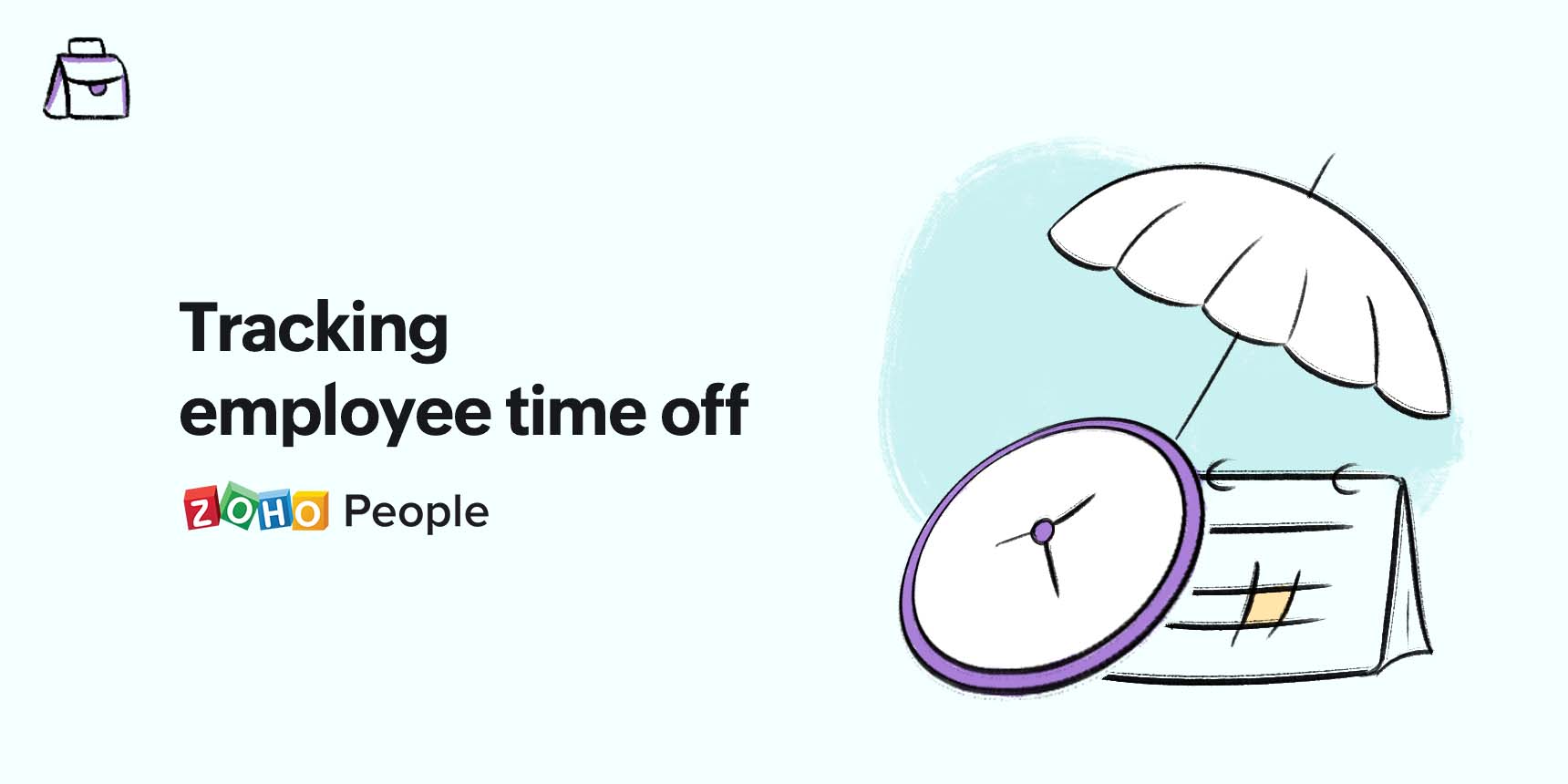- HOME
- More
- On Zoho People
- 4 different ways to track employee time off
4 different ways to track employee time off
- Last Updated : January 2, 2024
- 1.4K Views
- 3 Min Read

The importance of managing employee paid time off well at your organization cannot be overstated. Tracking time off without any errors is key to complying with the labor laws governing your region, and it ensures you pay your employees accurately. Plus, the impact that adequate time off can have on employee satisfaction and morale is huge, and it is one of the benefits that the modern workforce expects their workplace to provide. Any errors in tracking their time off or the time off approval process can shake the trust your employees have in your organization. With a clear process in place, you can improve your workforce's productivity levels and keep stress at bay.
If you are new to the HR sector or a small business trying to streamline time off management, here are four different ways to track employee time off:
Time off tracking software
Most organizations use either a stand-alone time off tracking software or the time off module that comes as part of their HR software. This can function as a one-stop solution to managing your workforce's time off. Employees can apply for leave in just a few steps, and their request will be sent to reporting managers or HR team for approval. Employees can check their leave balances and upcoming holidays without having to ping their HR team every time. These systems are often extremely flexible, meaning leave types, leave entitlement, rollovers, and weekend settings can be configured in a way that is consistent with your organizational policies and labor laws. Some systems offer a variety of reports that provide insights on the daily employee leave status, leave information for payroll processing, employee leave encashment, and more.
Zoho People, our human resource management software, comes with a robust time off tracker that allows organizations to manage time off in a way that is consistent with their organizational practices and labor laws. Check out what the Zoho People's time off tracker offers.
HR spreadsheets
Some organizations use HR spreadsheets to manage their workforce's time off. Most of the time, the spreadsheets used to track employee time off follow a specific template that has the names of every employee, different leave types that are entitled to them, company holidays, company weekends, and other relevant fields. A single spreadsheet with all this information is shared with every employee so that they can mark their time off directly in the document. However, as this is a manual way to manage time off, the process can become tedious. Entering data manually also creates more room for error. As it is shared among different people, data may be inaccurately altered or even deleted in some cases.
Emails
Using emails to manage employee time off has been in practice for a very long time. In most organizations, employees will have to write an email to their reporting managers or HR team stating the reason for their time off. Then, the reporting manager sends an email approving or rejecting the time off. While this way of managing employee time off may seem more straightforward for some, this approach can be highly-inefficient for several reasons. It puts a strain on both employees and the HR team, as the whole process manual data tracking. When the inflow of emails is high, these time off requests can get buried, and HR team members or managers risk keeping employees in the dark if they fail to respond. Tracking the leave data for payroll processing can also become an issue, as HR teams have to go through every email and gather the data manually.
Paper-based processes
Some organizations still leverage paper-based processes to track time off. In this process, employees may be required to submit their leave applications physically for signature and approval by either the HR team or their manager. However, in the long run, this way of tracking time off can do more harm than good. Paper-based processes may put an administrative burden on both your HR team and your employees. You may not be able to easily access the time off information for reporting purposes, which can cause you to lose visibility of your workforce's absence patterns. Paper-based documents may also get lost or tampered with more easily than they would through digital processes.
Wrapping up
A well-defined process for tracking time off will save your organization from compliance issues while keeping your workforce engaged, productive, and satisfied. We hope this blog gave you a clear idea of the different available ways to track employee time off!
 Tarika
TarikaContent Specialist at Zoho People


